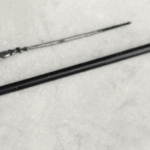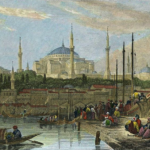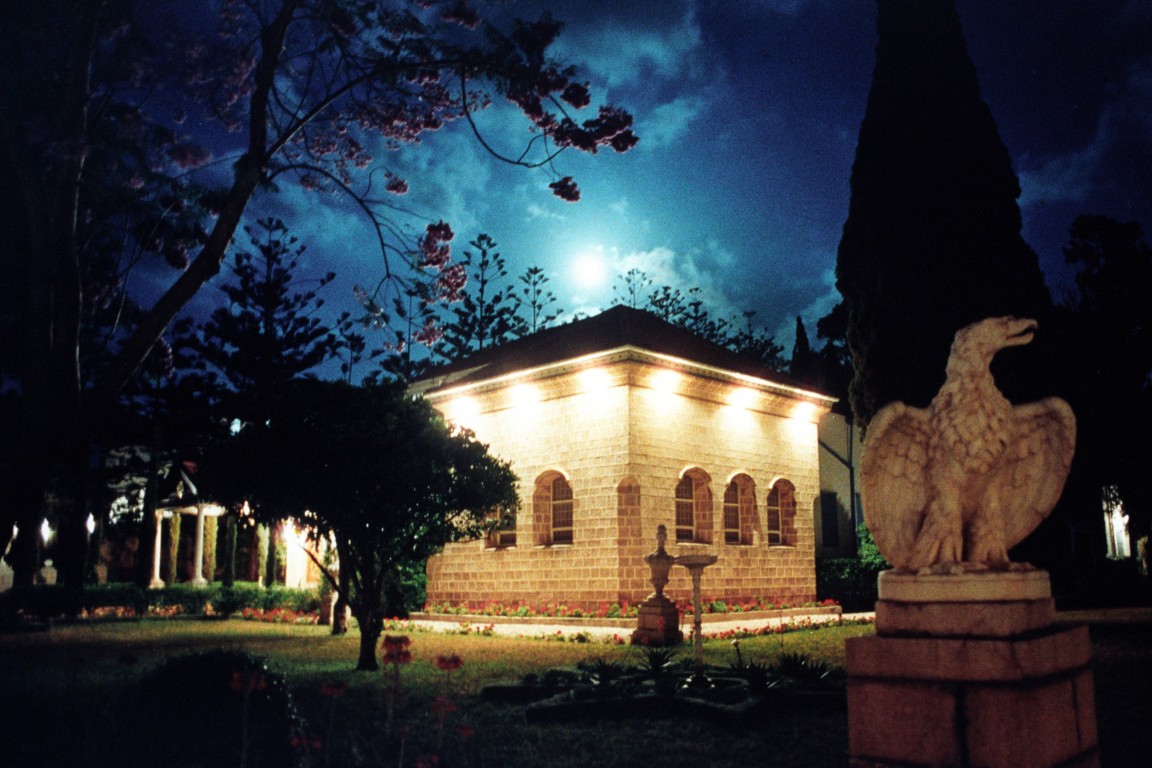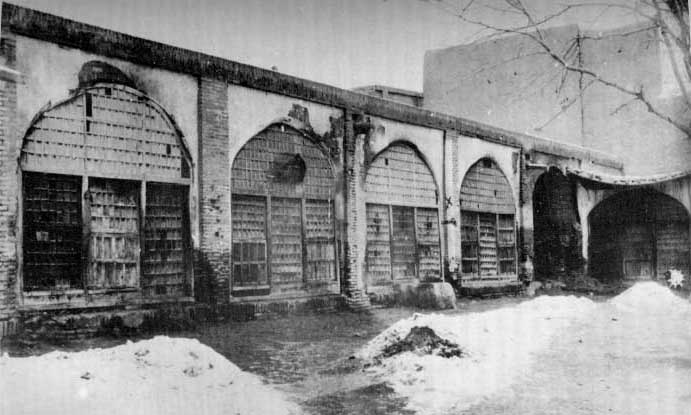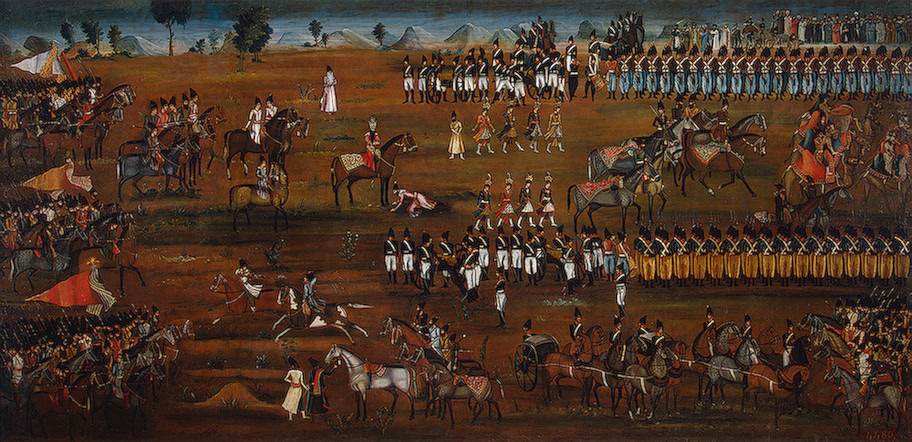
The Resignation of Captain von Goumoens
 When the Austrian Captain Alfred von Goumoens obtained a posting as a military attache to Persia, it was the kind of appointment that is the making of a career and the height of adventure. The country was thought of by Europeans as “oriental” and far away. It was a time when European military technology and know-how was in demand in other countries. It was a position of potential influence where he could serve the interests of his country.
When the Austrian Captain Alfred von Goumoens obtained a posting as a military attache to Persia, it was the kind of appointment that is the making of a career and the height of adventure. The country was thought of by Europeans as “oriental” and far away. It was a time when European military technology and know-how was in demand in other countries. It was a position of potential influence where he could serve the interests of his country.
The Captain was to be Iran during some of the most momentous events of the time. He may have been in Iran when, in 1850, the Bab was executed.
Captain von Goumoens was certainly there when two obscure Babi youth, in an attempted revenge, tried to assassinate the Shah. They approached him while he was passing on his horse with pistols loaded with birdshot – a strategy so likely to fail that it was identified as evidence that no capable person was involved in the act. The Shah was slightly wounded and the assassins, who were quickly apprehended, were tortured and put to death. What followed was so horrific that Captain von Goumoens doubted his readers would believe him. Suspicion fell on the Babi community as a whole and the response was indiscriminate. Merely to carry the shadow of suspicion of being a Babi was enough to be a death warrant and by the time all was done more than 400 had been put to death in the city.
During this pogrom, Tahirih, the herald of the emancipation of women in Iran, was put to death in the middle of the night, though she herself had been under house arrest for four years.
At the time of the attempt on the life of the Shah, Bahá’u’lláh was a guest of the new Prime Minister of Iran at his summer residence in the village of Afchih outside Tehran. Immediately news arrived, despite the urging he received to hide himself away until the storm passed, Bahá’u’lláh rode out for the Shah’s camp outside the city. He was seized, paraded and humiliated through the streets through crowds full of hatred and cast into Tehran’s most notorious dungeon: the Black Pit, together with a number of other Babis. For a time death was expected, and every day a Babi was taken out to be killed. In the end, Bahá’u’lláh’s innocence being established, he was released and exiled. In his work, the Epistle to the Son of the Wolf, Bahá’u’lláh writes:
Our innocence was indisputably established by the tribunals. Nevertheless, they apprehended Us, and from Níyávarán, which was then the residence of His Majesty, conducted Us, on foot and in chains, with bared head and bare feet, to the dungeon of Ṭihrán.[1]
Meanwhile, outside the prison a storm was sweeping the city. The killing of the Babis was organized such that all strata and sections of society were involved – competing with each other to demonstrate their enthusiasm — often using their tools of trade or profession as instruments of torture and murder. Numerous accounts of the ghastly killings were recorded, including many that were later published in newspapers.
Among them was a letter written by Captain von Goumoens, who witnessed all, and who poured out his heart to a friend:
… follow me, my friend, you who lay claim to a heart …, follow me to the unhappy ones who, with gouged-out eyes, must eat, on the scene of the deed, without any sauce, their own amputated ears; or whose teeth are torn out with inhuman violence by the hand of the executioner; or whose bare skulls are simply crushed by blows from a hammer; or where the bázár is illuminated with unhappy victims, because on right and left the people dig deep holes in their breasts and shoulders and insert burning wicks in the wounds. I saw some dragged in chains through the bázár preceded by a military band, in whom these wicks had burned so deep that now the fat flickered convulsively in the wound like a newly-extinguished lamp.
…. They will skin the soles of the Bábí’s feet, soak the wounds in boiling oil, shoe the foot like the hoof of a horse, and compel the victim to run. No cry escaped from the victim’s breast; the torment is endured in dark silence … now he must run; the body cannot endure what the soul has endured; he falls. Give him the coup de grâce! Put him out of his pain! No! The executioner swings the whip, and–I myself have had to witness it–the unhappy victim of hundredfold tortures runs! This is the beginning of the end. As for the end itself, they hang the scorched and perforated bodies by their hands and feet to a tree head downwards, and now every Persian may try his marksmanship to heart’s content from a fixed but not too proximate distance on the noble quarry placed at his disposal. I saw corpses torn by nearly 150 bullets….
When I read over again what I have written I am overcome by the thought that those who are with you in our dearly beloved Austria may doubt the full truth of the picture, and accuse me of exaggeration. Would to God that I had not lived to see it! But by the duties of my profession I was unhappily often, only too often, a witness of these abominations. At present I never leave my house, in order not to meet with fresh scenes of horror. After their death the Bábís are hacked in two and either nailed to the city gate, or cast out into the plain as food for the dogs and jackals. Thus the punishment extends even beyond the limits which bound this bitter world, …
Since my whole soul revolts against such infamy, against such abominations as recent times, according to the judgment of all, present, I will no longer maintain my connection with the scene of such crimes…’
Captain von Goumoens submitted his resignation.
Image: Persian 19th Century Soldiers Oil on canvas. 203×415 cm. Iran. Qajar Dynasty. Circa 1815/1816. A multifigure composition spreads across this huge canvas, depicting a real event which took place in the Ujan valley in July 1813: the heir to the Iranian throne, Abbas Mirza, showing his father, Fath Ali Shah, the regular army, newly reorganized along European lines by English and French instructors.
Sources: The Dawn Breakers, Nabil’s Narrative and The Baha’i Faith, the Emerging Global Religion, Willian Hatcher and Douglas Martin
(This article is the 104th in a series of what I hope will be 200 articles in 200 days for the 200th anniversary of the birth of Bahá’u’lláh. The anniversary is being celebrated around the world on 21 and 22 October 2017, The articles are simply my personal reflections on Bahá’u’lláh’s life and work. Any errors or inadequacies in these articles are solely my responsibility.)

